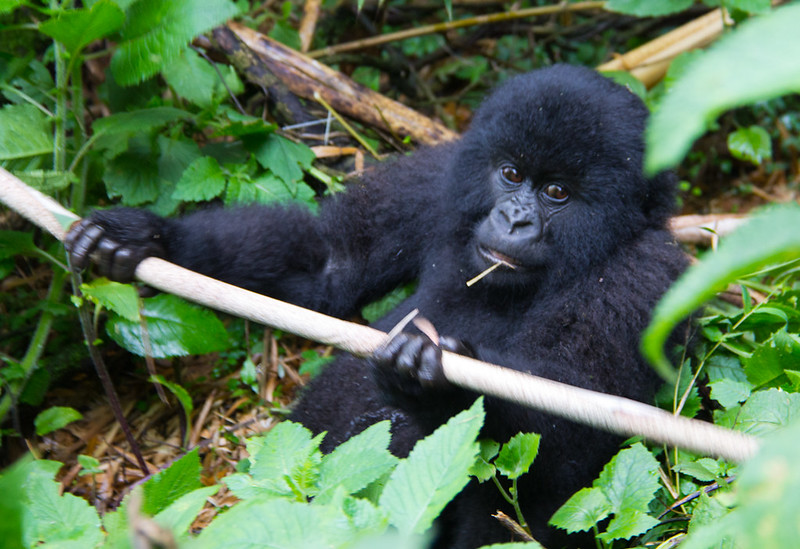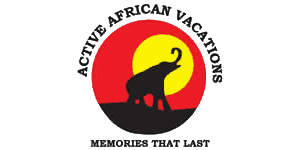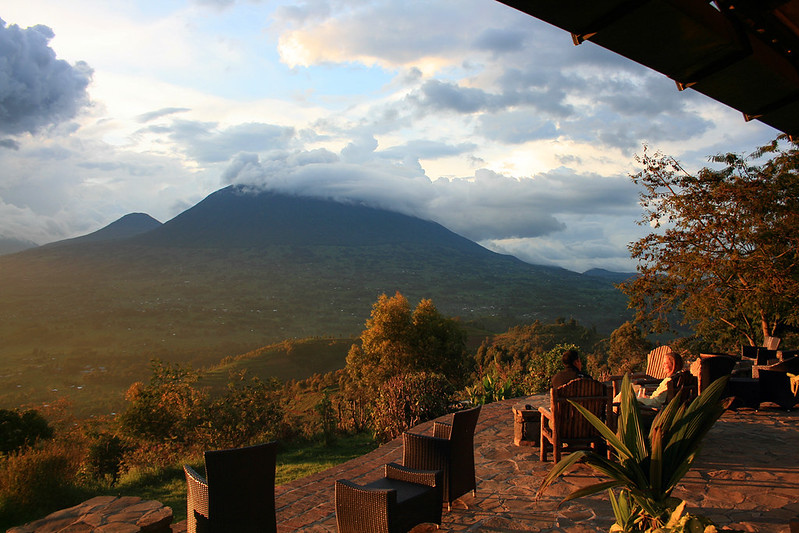
Guide to Rwanda Gorilla Trekking Safari Africa 2024.
Guide To Rwanda Gorilla Trekking Safari Africa: In this travel guide to Rwanda Gorilla trekking, we make sure we offer you the most up to date information about gorilla trekking in Rwanda, including all the information on when to go, what to see(primates), how much it costs to trek, travel agencies, and where to stay while in Rwanda for gorilla trekking.
Summary of Gorilla Trekking in Africa.
Mountain gorillas, also known as Gorilla Berengei, are only visible in three nations in the world: Rwanda, Congo, and Uganda. Rwanda’s Parc National des Volcans is a national park featuring volcanoes where you can see these primates in action. By 2024, ten habituated groups of mountain gorillas will exist, meaning that 80 tourist gorilla permits would be available per day in Rwanda. In groups of eight, these frightened primates can be seen. Since each trekking requires a gorilla permit that costs US $1500 per person, a percentage of your donation will go toward the preservation of these mountain gorillas.
What is the average cost of a gorilla tour in Uganda and Rwanda
Primates
Guide To Rwanda Gorilla Trekking Safari Africa
Recognizing the cost of obtaining a gorilla permit in 2024 and the expense of trekking with gorillas in Uganda and Rwanda.
The total cost of a gorilla trekking tour is mostly determined by the cost of the gorilla permit. Currently, a permit for Uganda costs $600 for foreign residents and $700 for foreign non-residents per person. Locals spend UGX 250,000 a person in the meantime. However, by July 1, 2024,the price for gorilla trekking will rise to $800. In Rwanda, a permit costs $1,500 per person. A 5-day gorilla trekking safari in Rwanda is expected to cost between $3,400 and $5,500 per person (high-end) when extras like hotel, meals, and transportation are taken into account.
Note that your chances of seeing gorillas in Africa increase when you pay the permit, which raises the cost of the overall gorilla excursion. The prices of other things in your quote may vary depending on your preferred method of transportation (public, private, or self-drive), your level of comfort with accommodations (luxury or budget), and if you are a do-it-yourselfer or want to utilize a tour operator to handle logistics.
In order to give you a good idea of what to expect, let’s examine all these aspects that determine the average cost of a gorilla trekking vacation in Uganda and Rwanda

How much is a gorilla permit in Uganda and Rwanda in 2024?
Currently, a gorilla permit in Uganda costs $600 for foreign residents and $700 for foreign non-residents per person. Locals spend UGX 250,000 a person in the meantime.
However, the Uganda Wildlife Authority has announced a rise in the cost of gorilla permits starting 1st April this year2024 to 2026 . The foreign non-residents will now need to pay $800 per person for a gorilla permit, $700 for the foreign residents, UGX 300,000 for inhabitants of the East African Community and $500 for nationals of Africa.
For all foreign visitors, a Rwanda gorilla permit costs $1500 per person per trek (2024). Locals pay RWF
What To Expect From Rwanda Gorillas.
Best Guide To Rwanda Gorilla Trekking Safari Africa: Your stay in Rwanda will be improved by the following highlights. If you have to get up early, you should find somewhere nearer the park entrance. Your guide will drive you to the park headquarters by7am for a briefing on the rules and regulations of trekking gorillas. The hike, which could be challenging depending on your degree of physical condition, starts when you and the other group members of 8 reach the forest. Since they are known as mountain gorillas, hiking is required. The length of a gorilla safari in Rwanda might range from thirty minutes to many hours.
You will be led by incredibly skilled English-speaking forest guides to the specific habituated mountain gorilla troop for trekking.
The group of silverback male gorillas, who may weigh as much as 200 kg, or three times the typical man’s body weight, usually calms any anxiety that may have been there. The gorilla troop is usually distributed over a small area shrouded in thick vegetation. They will still communicate and even feed in spite of their curious onlookers, showing no signs of concern for their human guests. Every now and then one will approach you directly and curiously, maybe to the point that you have to back off. Usually, it will be a lively youngster.
You are not allowed to get any closer to the gorillas than seven meters in order to prevent the gorillas from spreading infectious human diseases.) The climate of Musanze, which is 1,700 meters above sea level, is mostly cold. It’s advised to pack warm clothing.
Gorilla Tracking Groups In Rwanda. Where To see The Gorillas Of Rwanda.
In Rwanda, tracking gorillas is only allowed in the Volcanoes National Park (Parc National des Volcans), which is a part of the greater Virunga highlands. The Virunga complex is home to roughly 480 mountain gorillas, which may be found at heights of 2,300 to 4,500 meters in the southern region of Virunga National Park (in the Democratic Republic of the Congo), Volcanoes National Park (in Rwanda), and Mgahinga National Park (in Uganda).
In Rwanda, there are two gorilla groups: one is utilized for research and study, and the other for conservation. These gorillas are only accessible to scientists and researchers. The two with the greatest number of gorillas are Pablo’s Shida’s and Beetme’s.
Ten habituated gorilla families that were raised for tourism are also open for trekkers to visit. The maximum number of visitors per gorilla group each day is eight, and the duration of your visit will be no more than one hour. These comprise the Karinsimbi, Sabinyo, Hirwa, Amahoro, Bwengye, Ugenda, Umubano, Susa group, Hirwa, Amahoro, Bwengye, Group 13 (the Agasha group), and Kwitonda.
Rwanda Gorilla Trekking Groups.
The following are the Rwanda Gorilla groups,
Susa Gorilla Trek (Susa A Family)
Dian Fossey specifically researched this group of gorillas.
Its name comes from the River Susa, which passes through the gorillas’ native habitat. However, the group’s position the day before will be known in advance for the next trackers by the RDB’s Tourism and Conservation trackers. Since the family usually resides in the upper mountain ranges, they are the hardest group to hike with. Travelers have occasionally been stopped from following the group because of their distant location. This family of 28 gorillas, which includes three Silverbacks, is quite remarkable.
This gorilla group was the largest before they divided into two. Because the group consisted of 42 members, visitors would note that the gorillas were widely distributed over the area. Byishimo and Impano, the group’s amusing newborn twins, are well-known. Poppy, one of Rwanda’s oldest habituated gorillas, was born in 1976 and resides there as well. It’s possible that Poppy was a member of the initial gorilla troop with which Dian Fossey worked. Due to the near impossibility of caring for both of the children, the mother of twins usually abandons one of the infants.
Every now and then, when we observed Nyabitondore, the mother, providing for her twins, Impano and Byishimo, we would pause to consider whether the stress of such a demanding task would drive her insane. But now you can see the twins playing with other gorillas.
Karisimbi Family Gorilla trek.( Susa-B)
Due to its break from the original Susa (Susa-A) family, this family is now referred to as Susa-B or the Karisimbi Group. It usually occurs on the slopes of Mt. Karisimbi Volcano, Rwanda’s highest mountain, which is 4507 meters high and home to 15 individuals. It may be more advantageous for serious hikers to join the Karisimbi Group. It seems as though they had established a dwelling on the elevated mountainous reaches of the Karisimbi caldera. Thus, seeing this group might necessitate a whole day of hiking. Every now and then, the gang ascends to greater altitudes, making it challenging to track them. However, RDB tour operators and conservationists will know the gorilla group’s location from the previous day. There are times when tracking the gorilla family becomes impossible due to their isolated location.
Sabyinyo Gorilla Group safari.
Guhonda is the charismatic leader of Sabyinyo and a strong silverback. This silverback gorilla group is the largest due to its great physical features. In actuality, Guhonda has managed to keep Ryango, his fiercest opponent, apart from the rest of his pack, keeping him as a lone silverback. Even though the Sabyinyo gorilla family is smaller than other gorilla families, it is nonetheless incredible.
This group’s name literally means “old man’s teeth,” and it derives from the Sabyinyo volcano. The Sabyinyo troop, one of those found closest to the park’s border, has eight individuals: three adult females, a young female, two juveniles, and a baby gorilla. One of the members is a Silverback, the largest gorilla in the entire park.
Amahoro Gorilla Tours.
The Amahoro gorilla troop is the most peaceful; the name means “quiet group.” This group consists of seventeen individuals: two Blackbacks, two Silverbacks, two Juveniles, two Adult Females, and five Infants. However, the calm comes at a heavy cost. The silverback of the group, Ubumwe, is serene, easygoing, and quiet. Sadly, though, he has lost a few group members to the Umubano gang, which is led by Charles.
It’s a steep hike, but the reward is immense when you view the Amahoro, who are visible up the relatively challenging incline.
Umubano Gorilla Safari Group.
The Umubano clan, named for its “neighborliness,” is made up of eleven members: six infants, three adult females, a sub-adult male, and a silverback. Following the defeat of the club’s most formidable silverback, Ubumwe, by Umubano’s current leader Charles, the group split away from the Amahoro gang.
As an adult silverback, Charles, like Ubumwe, could not stand orders. He started fighting and eventually confronted Ubumwe. A few weeks, maybe a month, passed during this battle. The Umubano were a group that Charles eventually succeeded in creating by capturing a few Ubumwe ladies. Since then, Ubumwe has grown to respect and value him. The two silverbacks have encountered each other multiple times, but there haven’t been any fights since the big fight.
Agasha Gorilla Trek.
When the group first started out, there were 13 members. There are currently roughly twenty-five individuals in the group, consisting of twelve adult females, two subadult females, three adolescents, seven infants, and a Silverback. Nyakarima, the previous leader of this group, was vanquished by Agashya, whose name translates to “the news.” In actuality, Agashya made headlines when he determined Nyakarima’s advantages and then issued a brutal challenge that led to Nyakarima’s group’s defeat. This was a historically significant event for gorillas that deeply disturbed Nyakarima.
Agashya then made his way up the volcano to keep his party safe and ensure Nyakarima didn’t find them. Since then, Agashya has quickly expanded his group from 12 to 25 members by enticing new lone gorillas and stealing members from other groups.
Agashya is famous for leading his entire group to the summit of the volcano at the first sign of danger. The same incident happened when a group of tourists went to watch Group 13.
Agashya thought he was about to be challenged in a duel by a silverback opponent. His firm followed him to the volcano in response. Every time we drew nearer, the group would push back until we came to a standstill. As a result, seeing this group will be challenging.
Kwitonda Family Gorilla Adventure.
Along with two other silverbacks and a blackback, Kwitonda the silverback, whose name means “the humble one,” is the leader of this group of eighteen animals. Trekking becomes challenging because it left the Democratic Republic of the Congo and frequently stays far away. These and Susa B are two of the most difficult clusters to find.
Hirwa Group Trekking (which means Lucky One).
Amazing Guide To Rwanda Gorilla Trekking Safari Africa: One of the gorilla families that roams the Virunga conservation region is the Hirwa family. This area is shared by the Volcanoes National Park in Rwanda, the Mgahinga Gorilla National Park in Uganda, and the Virunga National Park in the Democratic Republic of the Congo.
You can be sure that you will fall in love with this group as well because it is one of the most popular groups among hikers and is also one of the most traveled. Sometimes, when you spend a little time to find them, luck appears.
In Kinyarwanda, the name Hirwa means “lucky one.” This family was formed as a result of Munyinga, the dominant silverback, getting into arguments with the Susa family over his habit of mating with their female members. With two females, he made the decision to part ways with this family. He lived on the mountain Sabyinyo, gathering more women with him as he went. The Hirwa gorilla family is considered fortunate since one of their births produced a pair of twins. This made them one of the few groups of mountain gorillas with twins.
Among the Virunga ranges lies the extinct volcano known as Mount Sabyinyo, where they once lived. It is roughly 12,000 feet tall. Since its summit resembles worn-out fangs and is unlike any other peak in the Virungas or all of Africa, this mountain is known by the nickname “Old Man’s Teeth.”
The Hirwa family is quite close-knit and it’s a blessing if you can find them in an hour or so. Spending time with these beautiful animals in their natural environment, observing them as they play, eat, and explore the forest, is quite interesting.
To trek to this specific gorilla family, you must have a gorilla tracking permit. The annual fee of each permit is $1500, and reservations may be made through Rwanda safari operators like African Active Vacation.
Bwenge Gorillas in the Mist Trek.
This family consists of eleven Silverback owners. The areas with the highest concentration are the Karisoke Volcanic Slopes. The group is led by Bwenge, a silverback gorilla, who left his birth group in 2007 and was joined by other females from various gorilla groups. One of the most trying circumstances the group had to deal with was the death of six babies. This group is currently becoming more powerful because of two successful births in the last few years and a strong silverback leader. The journey to see the group was exhausting, involving an almost three-hour climb. There are times when the trails can be quite muddy and steep. This looks to be the cast of the legendary movie “Gorillas in the Mist.”
Uganda Family Gorilla Adventure.
This group resides in the Karisimbi region of Rwanda. The group consists of eleven gorillas, two of which are silverbacks. This mane, which denotes “being on the move,” was acquired by the family since they were constantly moving. It usually takes a lot of movement to locate them and is challenging to track because it is always moving.
What Else To Do After Rwanda Gorilla Tours?
Ultimate Guide To Rwanda Gorilla Trekking Safari Africa Apart from Gorilla trekking, Rwanda has other activities and attractions to visit while there. Among those include Nyungwe Forest National Park, Lake Kivu, and Akagera National Park.
Nyungwe Forest National Park is one of Africa’s oldest woods, home to about seven animal species, 300 bird species, and 12 species of primates. The main activities in this area are hiking trails, a canopy walkway, birding, and chimpanzee tracking
Akagera National Park:
This national park will provide you with the opportunity to see authentic wildlife; you may see buffalo, zebras, lions, elephants, topis, monkeys, bush backs, impalas, and much more. More than 500 distinct bird species can be found here.
Gishwati Mukura National park;
It is one of Rwanda’s most recent parks known for its primate and bird watching.
In an effort to save the chimpanzees that call Gishwati-Mukura National Park home, the government passed legislation in 2015. With a combined area of 34 sq km that includes both Gishwati and Mukura forests, it is the smallest park. At the moment, it is the park with the least amount of tourist traffic. The park offers you a chance to see many species seen in the Albertine region because it is located on the ridges of the Congo-Nile anomaly.
Numerous bird species, reptiles, monkeys, and tree species can be found in the park.
Gorilla Conservation and Events.
The Kwita Izina ceremony, which names gorillas for Rwandan safaris, is the most well-known of the mountain gorilla festivities. Celebrities attend this yearly event in large numbers. Planning your gorilla trek during this time will provide you the chance to participate in this occasion. In Rwanda, there are numerous gorilla conservationists. Among the several groups are The International Gorilla Conservation Project, The Dian Fossey Foundation, and others.


